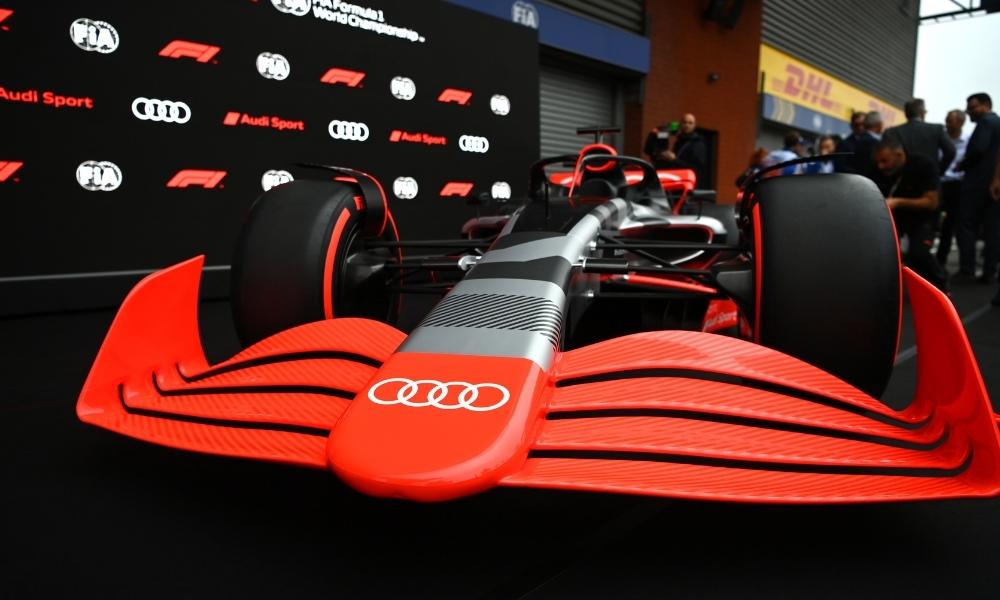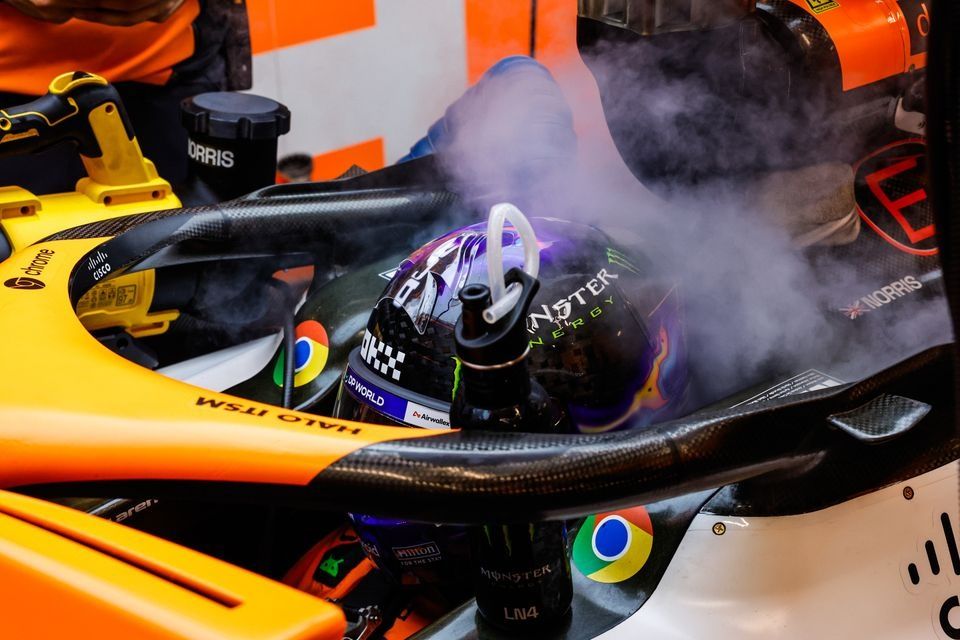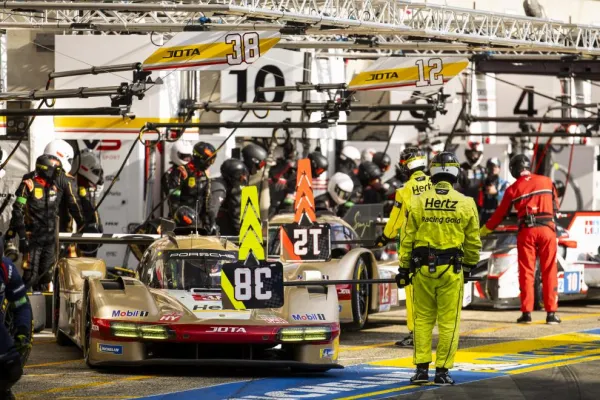Audi’s F1 Gambit: How Mercedes And Ferrari Are Bracing For A Political Showdown
The world of Formula 1 is on high alert as Audi, the German automotive giant, prepares to make its official debut on the grid in 2026. With Audi’s entry, the dynamics of F1 are set to change significantly, particularly in the realm of team alliances and political maneuvering. At the forefront of this shift are Mercedes and Ferrari, two of the most iconic and influential teams in the sport. As Audi teases a potential alliance with other teams, both Mercedes and Ferrari are taking notice, understanding that such a move could significantly alter the balance of power in F1.
The Landscape of F1 Alliances
In Formula 1, alliances between teams are not uncommon. These alliances can provide significant advantages, including shared resources, strategic partnerships, and increased political influence within the sport. Mercedes, for instance, supplies engines to several teams, including McLaren, Alpine, and Williams, until the end of the 2030 season. This network gives Mercedes considerable sway in F1’s decision-making processes. Similarly, Ferrari has a close relationship with Haas, often referred to as a “B team,” which further solidifies Ferrari’s position as a major player in F1 politics.
Red Bull, another dominant force, operates with a two-team setup, including AlphaTauri, which has been part of the Red Bull family since 2006. This setup allows Red Bull to exert significant influence over the sport’s direction and regulations. The presence of these alliances underscores the importance of political strength in achieving success in F1.
Audi’s Strategic Play
Audi’s decision to enter F1 as a full constructor rather than just an engine supplier marks a bold move. The brand, known for its success in endurance racing, particularly at Le Mans, is aiming to leverage its technical expertise and resources to make a lasting impact in F1. With Mattia Binotto, the former Ferrari team principal, at the helm, Audi is well-positioned to navigate the complex political landscape of F1.
Binotto’s experience at Ferrari, where he spent nearly three decades, has given him a deep understanding of how alliances can shape the sport. His hint at forming alliances with other teams suggests that Audi is not content to simply compete on the track; it also wants to challenge the established order in F1’s corridors of power.
The Impact on Mercedes and Ferrari
For Mercedes and Ferrari, Audi’s potential alliances pose a significant challenge. Both teams have traditionally relied on their influence and partnerships to maintain their competitive edge. Mercedes, in particular, has been a dominant force in F1 over the past decade, thanks in part to its extensive network of engine supply deals. Ferrari, meanwhile, has leveraged its historical status and close relationships with teams like Haas to maintain its position as a leader in F1.
However, with Audi potentially disrupting this balance, both teams must reassess their strategies. Mercedes, for example, is already focusing on significant changes for the 2025 season, aiming to recapture its former dominance after a few lackluster years. George Russell, one of Mercedes’ drivers, has expressed confidence in the team’s ability to make a significant step forward, highlighting the importance of learning from past mistakes and avoiding new pitfalls.
Ferrari, meanwhile, has unveiled a completely new car for the 2025 season, the SF-25, which promises to address previous shortcomings, particularly in high-speed corners. This overhaul demonstrates Ferrari’s commitment to staying competitive, but the team must also be mindful of the broader political landscape as Audi begins to exert its influence.
The Future of F1 Politics
As Audi prepares to join the grid, the future of F1 politics looks set to become even more complex. The 2026 season will bring significant rule changes, including smaller cars, which could level the playing field somewhat. However, it’s the political maneuvering that will truly define the era ahead.
Audi’s entry and potential alliances could lead to a realignment of power within F1. Teams not currently tied into major alliances might find themselves courted by Audi, potentially creating new blocs of influence. This could challenge the dominance of Mercedes and Ferrari, forcing them to adapt their strategies both on and off the track.
Strategic Adaptation
In response to Audi’s plans, both Mercedes and Ferrari are likely to explore new partnerships or strengthen existing ones. This might involve deeper collaborations with their current partners or even forging new alliances with teams that could benefit from Audi’s influence. For instance, Mercedes might consider expanding its engine supply network or strengthening its ties with McLaren, which has been a key partner in recent years.
Ferrari, on the other hand, could leverage its historical ties with smaller teams to create a stronger alliance network. This could involve providing more technical support to Haas or even exploring partnerships with other teams that are not currently aligned with major constructors.
The Role of Technology and Innovation
Beyond alliances, technology and innovation will play a crucial role in how teams navigate the changing landscape of F1. Audi’s entry brings significant technological expertise, particularly in areas like hybrid powertrains and advanced materials. This could push the boundaries of what is possible in F1, forcing other teams to innovate rapidly to keep pace.
Mercedes and Ferrari have already shown a commitment to innovation, with both teams investing heavily in advanced technologies like artificial intelligence and data analytics to improve car performance and strategy. However, with Audi’s arrival, the pace of technological advancement is likely to accelerate, making it essential for teams to stay at the forefront of innovation.
The Fan Perspective
For fans of Formula 1, the entry of Audi and the potential realignment of alliances could lead to a more competitive and dynamic sport. The prospect of new rivalries and alliances emerging could captivate audiences worldwide, bringing fresh excitement to the grid.
Moreover, the increased focus on technology and innovation could lead to more sophisticated cars and racing strategies, enhancing the overall spectacle of F1. Fans might also see more emphasis on driver talent as teams look to maximize their performance through both technical and human factors.
Discover more about what fans have to say about Audi and motorsport, at our F1 blog.
Global Reach and Marketing
Audi’s entry into F1 also highlights the global appeal of the sport. As a major brand with a significant presence in Europe, Asia, and the Americas, Audi’s involvement could attract new fans and sponsors to F1. This could lead to increased marketing efforts, with teams and sponsors leveraging the global reach of F1 to promote their brands.
Mercedes and Ferrari, with their existing global fan bases, are well-positioned to capitalize on this trend. They might focus on strengthening their brand identities through innovative marketing strategies, similar to those seen in other sports like MotoGP. Discover how these superstars and storylines stay ahead of the game through innovative marketing and branding at speedope.com.
Conclusion
The impending arrival of Audi in Formula 1 marks a pivotal moment for the sport, particularly for teams like Mercedes and Ferrari. As Audi prepares to challenge the established order, these teams must adapt their strategies to maintain their competitive edge. The future of F1 will be shaped by a combination of technological innovation, strategic alliances, and global marketing efforts. To explore more about how teams maintain their edge through innovative engineering and strategic partnerships, see our article on F1 Team Strategies.






















